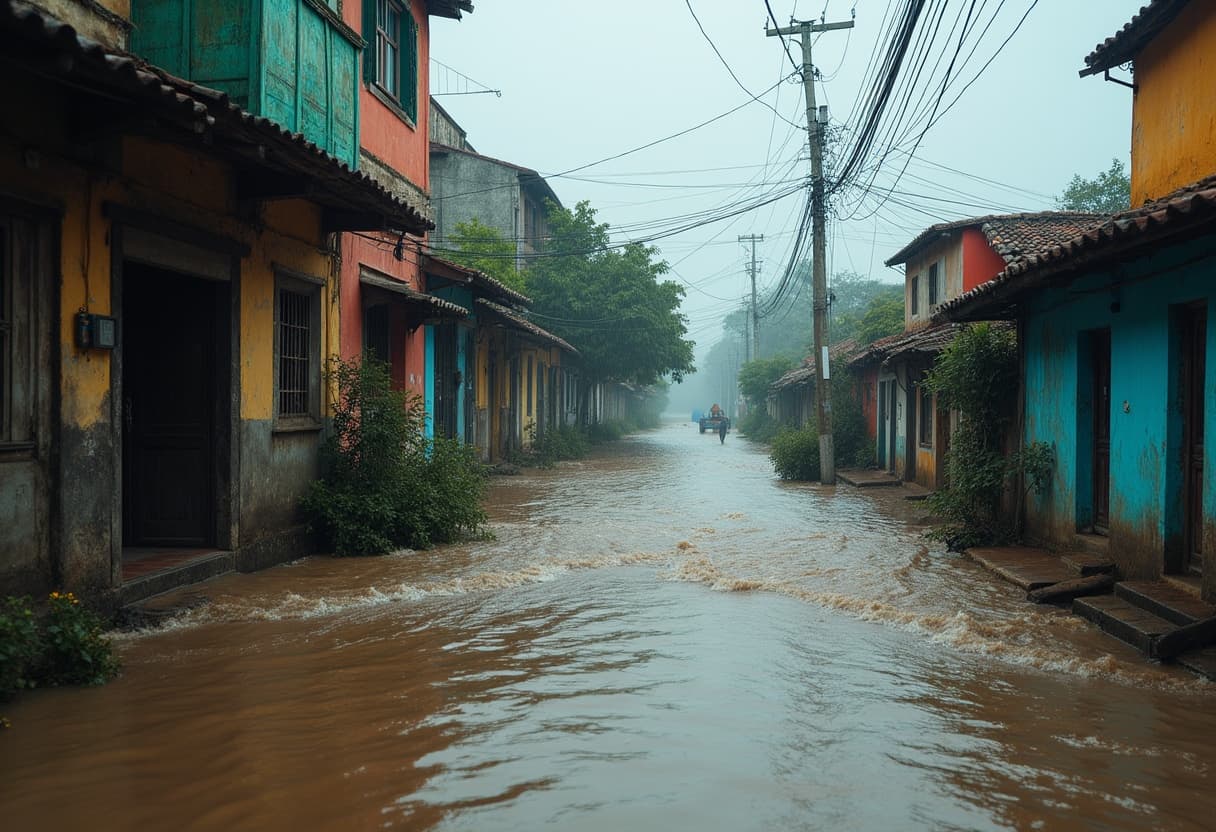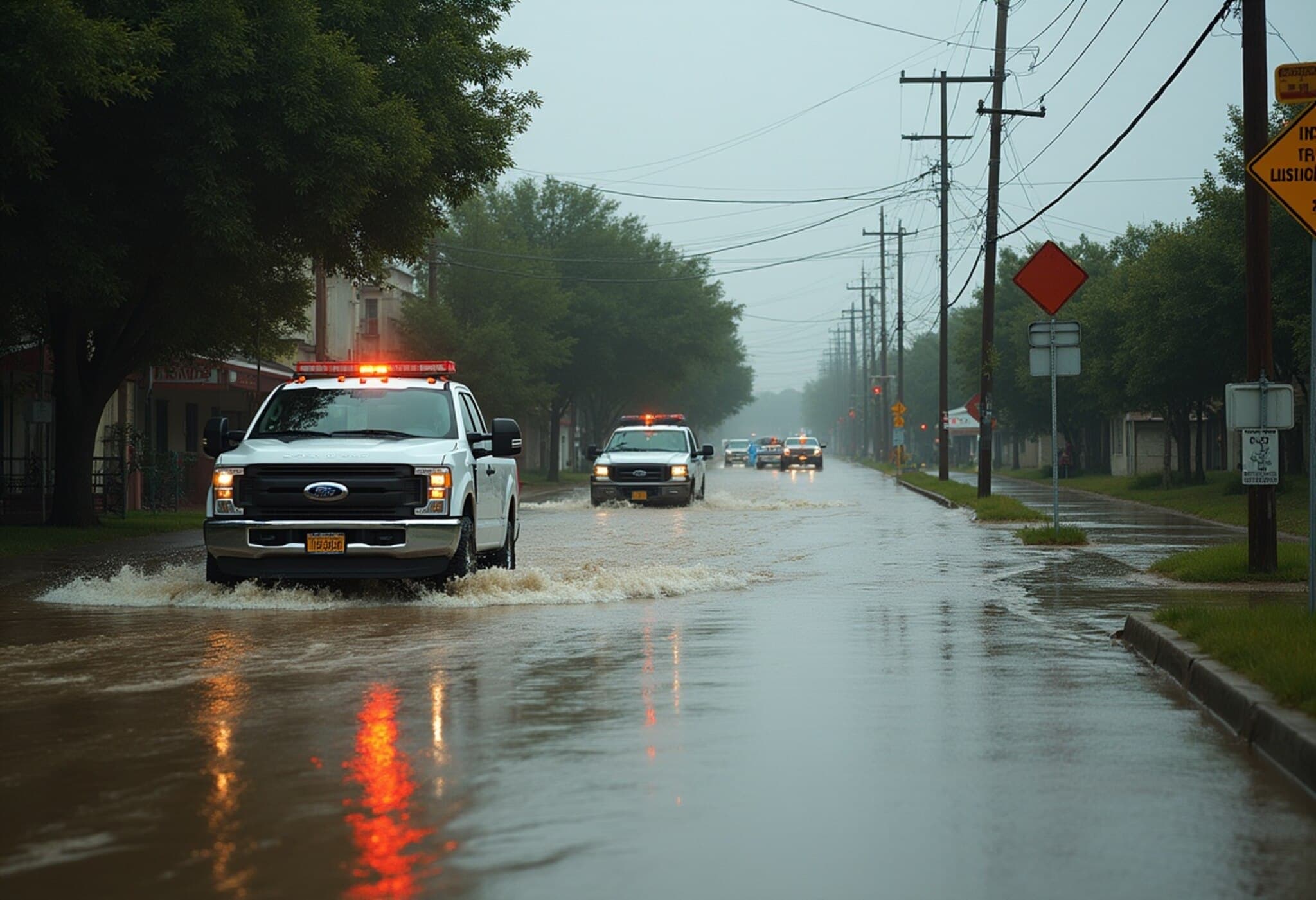Hong Kong Braces for Severe Weather: Red Rainstorm Warning Reissued
In a dramatic turn of events, Hong Kong is experiencing intense monsoon conditions linked to the remnants of Storm Danas sweeping through the Guangdong region. The city’s government has issued a red rainstorm warning, prompting the closure of all day schools on Friday to safeguard public safety amid forecasts of heavy rain, flooding, and strong winds.
Impact on Education and Community Safety Measures
The Education Bureau announced that while Monday will see the continuation of secondary school admission registrations postponed from Friday, Thursday’s registrations will proceed as planned. This decision reflects a responsive balance between operational necessities and storm readiness, ensuring parents and students are protected.
A government spokesperson emphasized flexibility, urging parents unable to attend registration on the rescheduled Monday to coordinate directly with assigned schools or the School Places Allocation Section for alternative arrangements.
Key Points for Residents and Families:
- All day schools will be closed on Friday to minimize exposure to hazardous weather.
- Secondary One admission registration is rescheduled from Friday to next Monday.
- Parents are encouraged to communicate with schools for any registration concerns.
Understanding the Rainstorm Warning System
The Hong Kong Observatory’s red rainstorm warning signifies that rainfall intensity exceeds 50 millimeters per hour, indicating a high risk of rapid flooding, particularly in low-lying and poorly drained urban areas. This follows the earlier amber warning, which activates when rainfall is over 30 millimeters per hour. The reissuance of the red warning at 12:40 pm underscores the severe and immediate threat posed by the continuing monsoon.
Safety Precautions Recommended by Officials
- Residents should avoid low-lying areas prone to flooding.
- Outdoor activities should be suspended; seek shelter immediately if caught outside.
- Monitor official channels for updated weather information.
- Prepare for potential disruptions in transportation and utilities.
Expert Insights: Regional Weather Patterns and Policy Implications
The active southwest monsoon associated with the decaying Storm Danas is funneling moisture into the Pearl River Delta, exacerbating rainfall intensity. Experts note that this pattern reflects broader climate variability in Southeast Asia, likely amplified by global climate change impacts. For Hong Kong—a densely populated, maritime city vulnerable to flash floods—the increasing frequency and intensity of such monsoon events pose ongoing challenges for infrastructure resilience and emergency preparedness.
On a policy level, Chief Secretary Eric Chan Kwok-ki’s convening of a cross-departmental meeting highlights governmental efforts to coordinate disaster response and ensure agile crisis management. This mirrors a growing recognition among urban administrations worldwide that preparing for extreme weather events is essential for safeguarding citizens and minimizing economic disruptions.
Looking Ahead: What This Means for Hong Kong
As Hong Kong navigates the immediate hazards brought by storm remnants, the event serves as a reminder of the need for adaptive urban planning and community awareness. The potent combination of heavy rains, urban density, and coastal geography necessitates continued investment in drainage infrastructure, early warning systems, and public education on emergency protocols.
Questions for the Future:
- How can Hong Kong further enhance its resilience against monsoon and typhoon-related flooding?
- What role does climate change play in altering regional storm behavior, and how should policies evolve accordingly?
- How might community-based initiatives complement official emergency services in times of crisis?
Editor’s Note
Hong Kong’s recent red rainstorm warning underscores the city’s vulnerability to increasingly volatile weather fueled by complex regional meteorological phenomena and climate change. While immediate efforts to protect students and residents are underway, these extreme events compel a broader conversation about long-term urban resilience and adaptive governance. Readers are encouraged to remain vigilant, engage with local safety guidance, and consider the larger implications of such weather disturbances for Hong Kong’s future sustainability.











